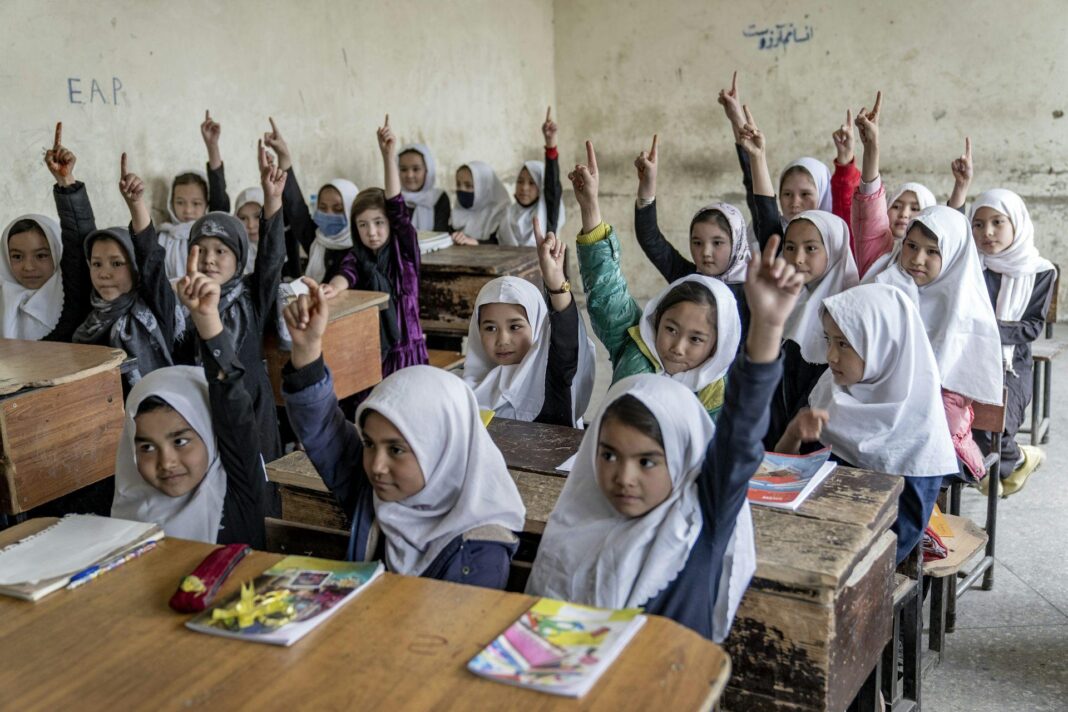When the Taliban fell from power in Afghanistan in 2001, women were once again allowed to go to school after being banned since 1996. I, along with World Bank education expert Raja Bentaouet Kattan and American University economist Rafiuddin Najam, analyzed the economic benefit of this societal change, using data from the Labor Force and Household Surveys conducted in Afghanistan in 2007, 2014 and 2020. We found it was enormous.
In the wake of the Taliban’s fall, educational opportunities expanded at all levels. The infant mortality rate declined by half, and the gross national income per capita nearly tripled (in real terms in purchasing power, from US$810 in 2001 to $2,590 in 2020.
A big part of the country’s economic progress in this period can be attributed to women. While the overall average return on investment in education remains low in Afghanistan, it is high for women. For example, for every additional year of schooling a woman received, her earnings increased 13%. This is higher than the global average of 9% for return on investment in education.
Twenty years after the first ban on women’s education ended, the Taliban resumed power in 2021 and has once again banned girls and women from attending school after the sixth grade.
The economic cost could potentially reach over a billion dollars – and this doesn’t include the wider social costs associated with lower levels of education for women. For context, Afghanistan’s entire gross domestic product was just $17 billion in 2023.
Our study demonstrates how catastrophic the newest education ban could be, not just for women, but for the whole country.
Research on the economic return to schooling, especially for women, is limited in Afghanistan. But such evidence is critical for understanding the economic losses a country faces when women are denied access to education and work opportunities.
Our study attempted to fill this gap by quantifying how earnings changed in response to an additional year of schooling. We looked at what happened between 2004, when the government expanded compulsory education for both men and women from sixth grade to ninth grade, and 2020.
Our findings suggest that the cost of excluding women from education and work is significantly higher than previously estimated. According to our research, Afghanistan risks losing over $1.4 billion annually. This equates to a 2% decrease in national income.
A widely held belief among researchers is that investing in women’s education impacts more than each individual woman. It offers economic and social benefits that can last for generations. This includes higher rates of school attendance and improved health for her kids.
Further research could explore the social benefits of women’s education in Afghanistan between 2001 and 2021, in addition to the economic benefits. Future studies could investigate the public returns to schooling by assessing whether investment in women’s education breaks intergenerational cycles of poverty, improves public health and reduces inequality, creating a multiplier effect for entire communities.
Every additional day that the ban on women’s education persists, generations fall further behind, losses compound and the dreams of millions of children and businesswomen become further out of reach.
The Research Brief is a short take on interesting academic work.
This article is republished from The Conversation, a nonprofit, independent news organization bringing you facts and trustworthy analysis to help you make sense of our complex world. It was written by: Harry Anthony Patrinos, University of Arkansas
Read more: Education in Afghanistan was a battlefield long before the Taliban returned The history of secret education for girls in Afghanistan – and its use as a political symbol How the Taliban are seeking to reshape Afghanistan’s schools to push their ideology
Harry Anthony Patrinos does not work for, consult, own shares in or receive funding from any company or organization that would benefit from this article, and has disclosed no relevant affiliations beyond their academic appointment.








